




click on thumbnails below to see
The Tattoos:
Prison & Biker Tattoos
A new form of street or biker tattoo began to emerge in the United States after the second world war. Instead of patriotic values, however, this new style of tattooing had embedded in it defiance, “a challenge to mainstream middle-class values as well as to the traditional form of patriotic and love-inspired working class tattoo” (DeMello 2000:67). This style of tattooing became synonymous with biker and prison convict subcultures, and continues relatively unchanged to this day.
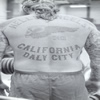 |
 |
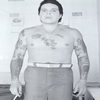 |
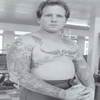 |
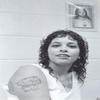 |
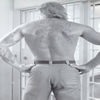 |
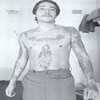 |
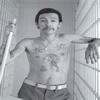 |
Prison and biker tattoos are most typically meant to be read as signifiers of group, subcultural identity. They are often (but not always) hand inked, are typically monochromatic (black) and are placed on highly visible parts of the body. Although they began as an almost exclusive practice among males, prison and biker tattoos (despite differences in styles) are found on both men and women. Individuals are typically heavily tattooed, with entire sleeves, legs, chests, backs and necks covered by ink. Imagery includes religious icons (Jesus Christ, crucifixes, the Virgin Mary), scales of justice, skulls, dragons, spiders, motorcycles, and biblical quotes. Literal tattoos are very common, frequently identifying the wearer as a member of a particular social group, gang, ethnic or cultural affiliation.
Maybe you'll find some inspiration with Punk tattoos.





'Under the Skin', Copyright 2004, Tony Hewer.

